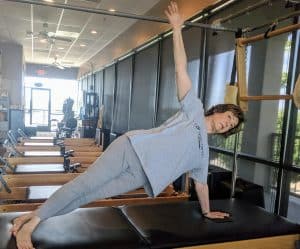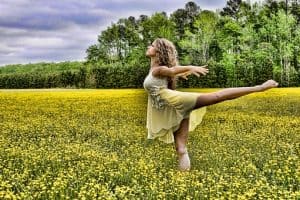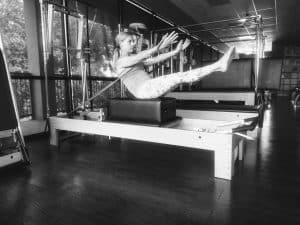Blog
I’m sure we’d all like to reverse the aging process. We all grow older but a “number” doesn’t necessarily mean that you can’t go on a hike, run a race, site see, play on the floor with grand children…and then get up. Why is it that we lose the mobility of our youth? It’s because as we grow older our fascia slowly drys out. Sedentary lifestyles, repetitive movement, and stress make the problem worse. Because our fascia is the tissue of form, we take on the shape of what we do every day, and in how we feel. Overtime, we…
Read MoreNot to be cliche, but I thought I would talk about this as we near New Year’s Resolution time. Is the quality or success of your workout determined by how sore your muscles are afterwards? A good workout should make you feel strong, energized, and at peace with yourself, instead of exhausted, sore or injured. Soreness is really the result of held tension that restricts the distribution of load and force on the body. You should be able to run, jump, lift weights, participate in a sport and be able to sit, stand and lift your arms the next day (or 2) without…
Read MoreWe wear clothes that make us feel attractive, confident, and comfortable…or not. We have stretchy and loose, or tight and restricting clothing…the later sometimes requires uncomfortable cute shoes. You probably wouldn’t want to go for a run or have a Pilates workout in the tight uncomfortable clothes because they would restrict movement. Being comfortable in your own skin would be like wearing the stretchy, loose clothes giving you freedom to move in your Pilates or Yoga class, get in that run, and feel good doing it! “…Feeling good can make you more attractive than torturing yourself to look a certain way.”…
Read MoreDoes your Pilates instructor know if you have Osteoporosis, spinal or disc injuries? How about shoulder, hip or other joint issues? Eye conditions? Are you pregnant? Do you have back pain, sciatica or scoliosis? Perhaps you have a knee or hip replacement? Are you recovering from surgery? Do you have any other physical considerations? Does your Pilates instructor personally review your health intake form BEFORE you work out? Do you know if your Pilates instructor is even CERTIFIED to take care of special populations? …we are the ONLY place in Fort Bend county certified to teach whole body, fascial movements.…
Read MoreA blog by Performance Pilates Co-Owner, Cody Robbins You get a team of qualified instructors with combined 40+ years of experience Personal attention Small equipment classes Mat classes Private sessions Classes are approximately an hour long. Correction with direction. We make sure you are doing the exercises correctly and safely for your body. A fascial approach to movement You get to progress! Let us take you on a Pilates journey. Whether it’s a movement or thought process, you’ll be taken somewhere new in every class. There is no new or old way to teach Pilates. There is a RIGHT way.…
Read MoreA Blog by Cody Robbins – Co-Owner: Performance Pilates- I recently competed in a horse show and did well! I was Champion in my Schooling Jumper Division on Saturday, and could have been on Sunday. In the throws of competition I wanted to out do myself on Sunday and it didn’t go quite as well. I was hoping to write about how letting go of the diaphragm and allowing the front of the body to open kept me upright and behind the motion of the horse instead of collapsing or leaning forward and getting ahead. That happened, and it’s why we…
Read MoreFeedback from the springs on the Reformer or any other Pilates apparatus, can give you a feeling of awareness and safety. You can let go of tension and let your body move. In Reformer exercises like the Hundred, Coordination, Backstroke and Teaser, reaching into the straps and springs helps to deepen the arm line connection. With that “connection”, you can move without unnecessary tensing of the abdominals and gripping in the quads. You still feel your abs as the spine opens and lengthens backwards, the legs get picked up, and float out in front of you light as a feather. …
Read MoreI quote Thomas Myers, author of the Anatomy Trains, talking about healthy fascia saying “If you think of children, they bounce. If you think of grandma, she doesn’t bounce.” Thomas Myers was talking about how our fascia (connective tissue) is healthy and hydrated when we are young and slowly dries out as we age. “…Our fascia should be wet, springy, “elastic” tissue that is always moving, sliding and adapting to our environment and the forces put upon it.’ We need this elasticity in our tissues to reduce tightness, soreness and injury. Fascia that is dehydrated and stuck does not have…
Read MoreTo understand Anatomy Trains you must first understand Fascia. Fascia is the connective, web-like tissue under the skin. It covers the entire body like a spider man suit, encases the muscles, organs, muscle fibers, nerves and bones. Myofascia relates to the fascia surrounding and separating muscle tissue (muscle – fascia). Specifically, there are twelve myofascia lines (meridians) in the body. These lines all run head to toe (or toe to head depending on how you look at it). A single line starts at a bone and connects through fascial webbing to a muscle, on to another bone and another muscle…
Read More“Fascia” is a word you will be seeing and hearing more and more. If I told you that movement could become next to effortless, or that you wouldn’t feel exhausted or as sore after your workout or practicing your “sport”, would you believe me? That is what I’m finding from my own personal experiences practicing and teaching Pilates, running, and riding horses. Since graduating from Karin Locher’s Bridge to CPM (Contrology Pilates Method), I want to share with you what I’ve learned about movement, moving better, and fascia. First of all what is fascia? In an attempt to be brief…most…
Read More







